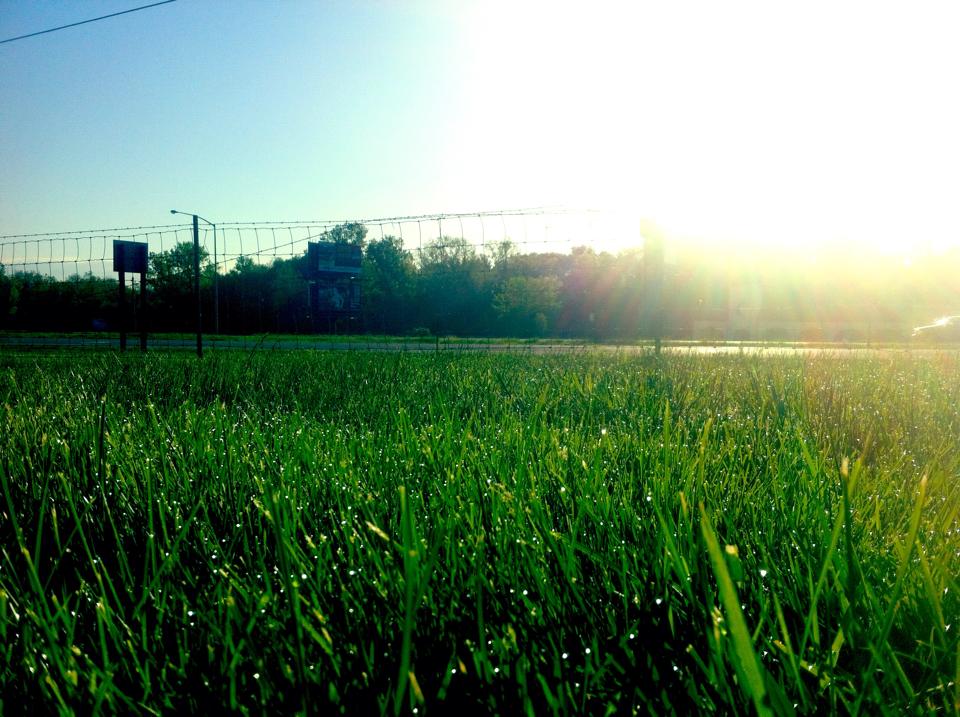Becoming an Expert Seeder!
Oak Creek Nursery Seeding Guarantee
We guarantee that we will provide a seeding that has applied the proper amount of seed and with proper technique. This guide should help you becoming an expert seeder
We cannot guarantee germination due to several factors that are beyond our control…
- Lack of Water
- Leaves piled up and left on young grass
- Vigorous raking of young grass
- Trampling of young grass by people, vehicles, and pets
- Environmental damage (seedbed, erosion, water runoff, excessive shade, etc.)
As always, feel free to give our team a call if you have any questions about your lawn renovation!
Watering Instructions for New Seed:
The only practice that separates a successful seeding from disaster is water! Moisture is absolutely critical for the germination and growth of seeding plants. Immediately after seeding, the area should be thoroughly watered, not to the point of runoff but enough to completely soak the soil. Then it is just a matter of maintaining a moist seedbed.
On cool cloudy days, watering once a day may be sufficient. On bright sunny days, with some drying wind, it may be necessary to water once in the morning and again around mid-day. Remember to keep the seed constantly moist and not to flood the areas.
Once the seed has germinated, the area will need to be watered until the roots system has grown to the point that the plants are generally self-sufficient. An additional 2 weeks of watering will help the new seedlings get off to a great start.
All-in-all, about 4 weeks of watering are needed to establish a new lawn from seed. Watering is an art, so watch the soil. If you see it drying out, add enough water to replenish moisture. Careful watering will pay great dividends for successful seeding.
Straw or Topsoil?
Neither! When laying down seed it is very important to put a layer on top of the seed to hold in moisture. Without this layer, the wind easily dry out the seed. Most people would automatically think to put straw or topsoil over it, but both are bad choices. Each of these contains weeds in them and that is not something you want to put onto a newly seeded lawn. Instead, choose Peat moss which is formed when moss and other living materials decompose in peat bogs. It does not contain weeds and will hold the moisture that your new seed needs
Spraying for Weeds:
When spraying for weeds, you must wait two mow cycles before spraying. Meaning you must mow twice before spraying for weeds on new seed. However, you may spray for weeds before seeding but you must wait one week after spraying before you can seed.
MAINTAIN A GOOD FERTILIZATION PROGRAM!
We off a great Fertilization Program! Call to check it out!
Adhere to Proper Mowing Techniques:
Keep your mower blade sharp. Mow in opposite directions or at 90 degree angles to previous cuts. Mow high 3”- 3 ½”. Never cut more than 1/3 of the grass at one time.
Fescue Seed:
- Perfect for our Kansas heat
- High Drought Tolerance
- High Traffic Tolerance
Great grass all season long!
Blue Grass Seed:
- High Heat Tolerance
- Soft enough for bare feet
- High Traffic Tolerance
Great grass for a full sun yard!
FYI:
Dormant Seeding:
This is seeding that is done during late Fall to early Spring, typically before snowfall. During this time, the soil is too cold for the seed to germinate. If you seed your lawn during this time, you will not need to grate the dirt.
Check the Seed!
When buying seed, always check the label! When you buy seed from “Big Box” stores, there are typically a lot of fillers and coaters to them, also known as inert matter. Inert matter consists of seed hulls, stems, and dust. There is more inert matter inside these grass seeds then there is of actual seed. Always read the labels! Grass seed bags will always have labels which will tell you the ingredients. Only buy real grass seed!

